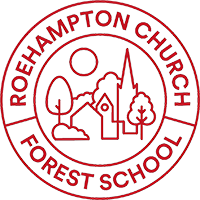Art & Design
Intent
Early Years Foundation Stage (EYFS)
By the end of Foundation Stage, the children will have had the opportunity to represent their own ideas, thoughts and feelings safely using a variety of materials, tools and techniques through experimentation with colour, design, texture form and function.
By the end of Foundation Stage, the children will have had the opportunity to represent their own ideas, thoughts and feelings. They will have shared their creations and begun to explain the process they have used.
Key Stage 1 (KS1)
By the end of KS1 the children will be able to respond positively to ideas and starting points.They will have used a range of materials creatively to design and make artworks. They will have explored ideas and begun to collect information, work on their own and collaboratively with others producing artworks in 2D and 3D and on different scales. They will have used drawing, painting, printing and sculpture to develop and share their ideas, experiences and imagination. They will develop a wide range of art and design techniques in using colour, pattern, texture, line, shape, form and space. They will have begun to use ICT to explore topics and ipads to photograph own work. They will have learned about the work of a range of artists, craft makers and designers. They will have looked at, discussed and reproduced artwork or created their own artworks based on the designs and artworks of Clarice Cliff (circles), Georgia O’Keefe (flowers), William Morris (printing and textiles) and Andy Goldsworthy (colour and pattern using beach artefacts), John Piper/ Adishwar Kumar Jain (collage), Rachel Whiteread (sculpture) and Giuseppe Acrimboldo (paint). They will be able to describe the differences and similarities between different practices and disciplines, and make links to their own work. They will start to understand how ideas are developed through processes. They will build up resilience to getting things wrong by trying and trying again. They will practice and share their learning and skills with others, receive and offer feedback to improve.
Key Stage 2 (KS2)
By the end of KS2, the children will have developed their techniques, including their control and their use of materials, with creativity, experimentation and an increasing awareness of different kinds of art, craft and design. They will have created sketchbooks to record their observations and use them to review and revisit ideas. They will improve their mastery of art and design techniques, including drawing, painting and sculpture with a range of materials [for example, pencil, charcoal, paint, clay]. They will have studied great artists, architects and designers in history. They will have studied the artworks and designs of Howell Killick Partridge and Amis (HKPA) (Architects and designers), Stephen Wiltshire (Buildings and skylines), Tiffany and Chihuly (coloured glass), David Hockney (Landscapes), Matisse (The snail and the Cutouts), Salvador Dali (Surrealist movement), Monet (French impressionism), Pre-Raphaelite paintings (The Lady of Shalott). They will have compared ideas, methods and approaches in their own and others’ work and say what they think and feel about them and adapt their work according to their views and describe how they might develop it further.
Implementation
We deliver our Art and Design Curriculum through a topic based curriculum where possible. The curriculum delivered is based on the National Curriculum. Children at RCS from Year 1 to Year 6 have two half-terms where Art and Design is the Assessment Focus and where the main elements of the Art and Design curriculum are taught. Teachers can choose to deliver Art and Design on a weekly basis for the duration of the half-term, or they can block it in bigger chunks.
We deliver our Art and Design Curriculum through a topic based curriculum primarily. The curriculum delivered is based on the National Curriculum. Children at RCS from Year 1 to Year 6 have two half-terms where Art and Design is the Assessment Focus and where the main elements of the Art and Design Curriculum is taught. Some Art and Design teaching may occur in half-terms that do not have Art and Design as a focus, but links well to the overall topic being delivered. In the Foundation Stage, Art and Design is taught through the key learning points found in the ‘Expressive Arts and Design’ strand. Each half-term, specific skills will be taught through projects, which link to the topic. Opportunities to extend these skills are also presented during child led learning both in the indoor and outdoor learning environments. Each classroom has an area, which is specifically dedicated for the children to explore art during their free play.
In Years 1-6, Teachers can choose to deliver Art and Design on a weekly basis for the duration of the half-term, or they can block it in bigger chunks.
The detail of where all the aspects of the Art and Design Curriculum is taught, can be seen in the table below. Each year group also has a Curriculum Map and the aspects of the Art and Design Curriculum designated to that year group have been allocated in the two half-terms where Art and Design will be a focus and in other half-terms if there is a direct link to the overall topic being delivered.
Teachers will use a variety of practical learning styles to ensure that all children have access to the curriculum. Children will get opportunities to explore a range of materials and to develop a variety of techniques. Teachers strive to meet the needs of all individual learners in their teaching of Art and Design. The emphasis will be on planning creative art and design lessons that do not require pupils to use formal recording methods, as well as meeting the needs of those pupils who require additional time or support with developing their fine motor skills.
(Please see our SEND/Equality Statement of Intent/Implementation for more information on ways in which we seek to ensure that all pupils have opportunities to succeed across all curriculum areas).
